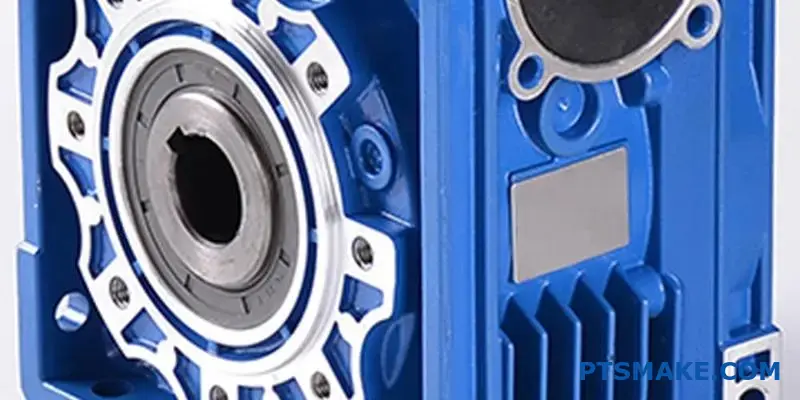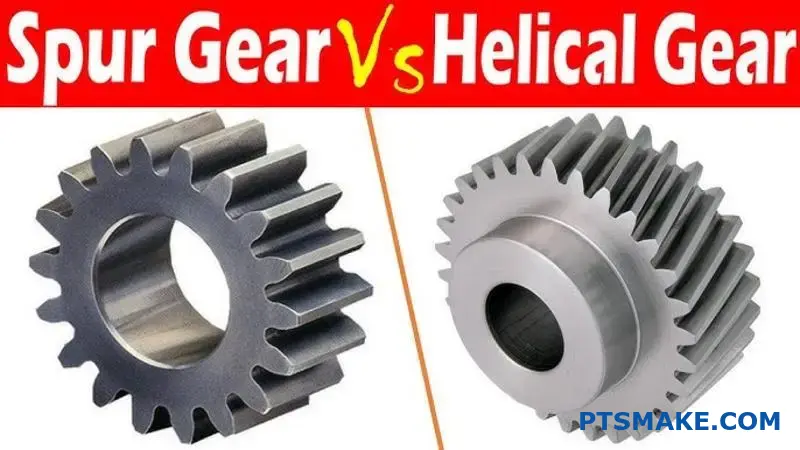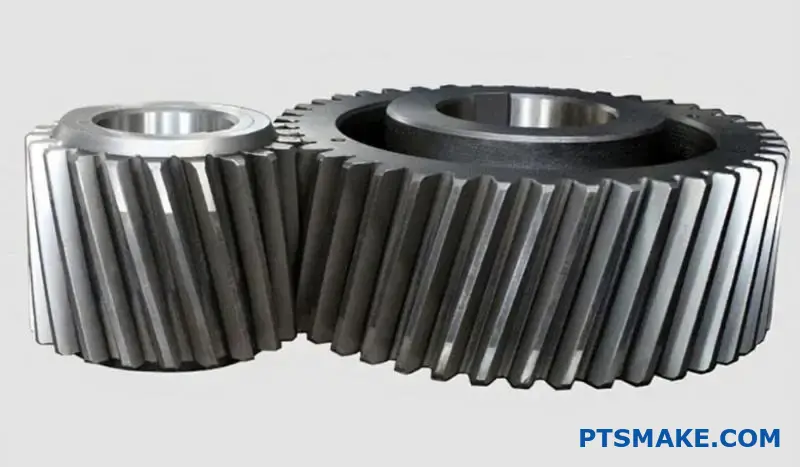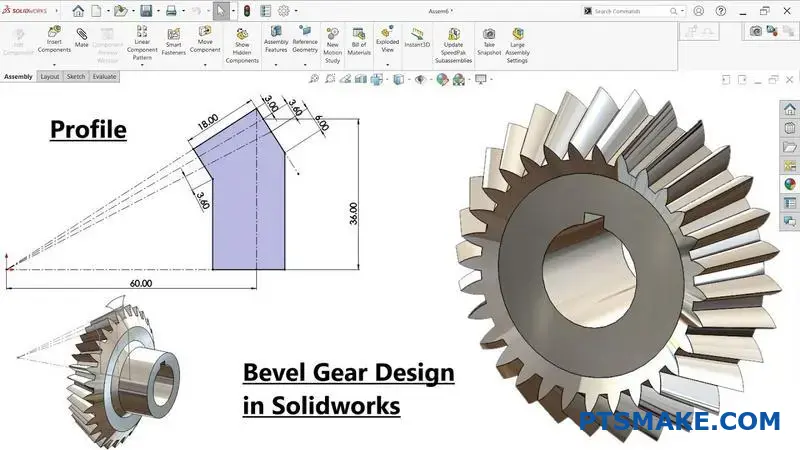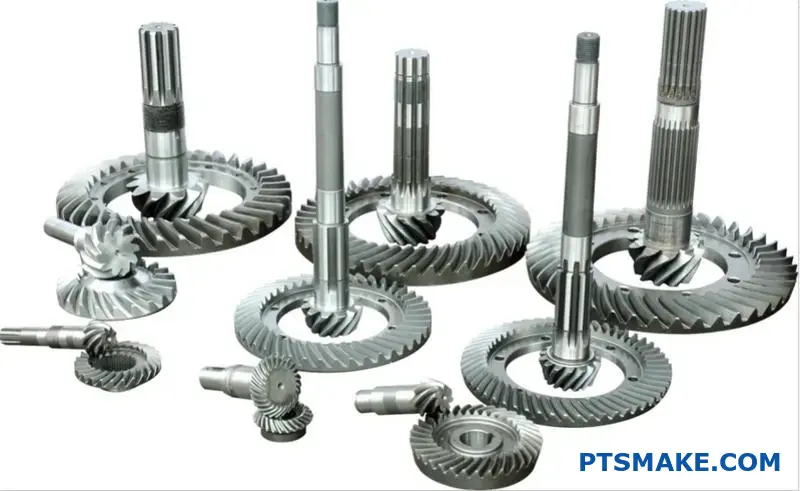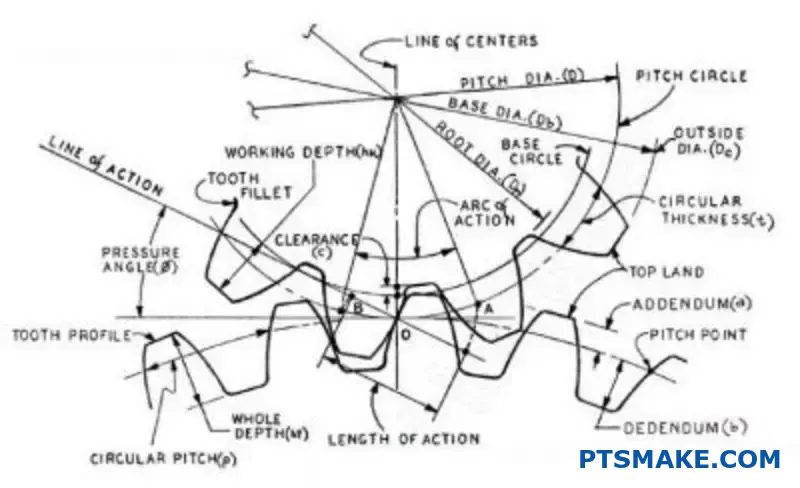Are you struggling to understand what custom CNC machining really is? Many engineers and procurement managers get confused by the technical jargon and complex processes involved, often leading to incorrect specifications and costly manufacturing errors.
Custom CNC machining is a digital manufacturing process where computerized machines remove material from a solid block to create precision parts according to your unique specifications. It offers high accuracy, versatility, and repeatability for producing complex components across numerous industries.
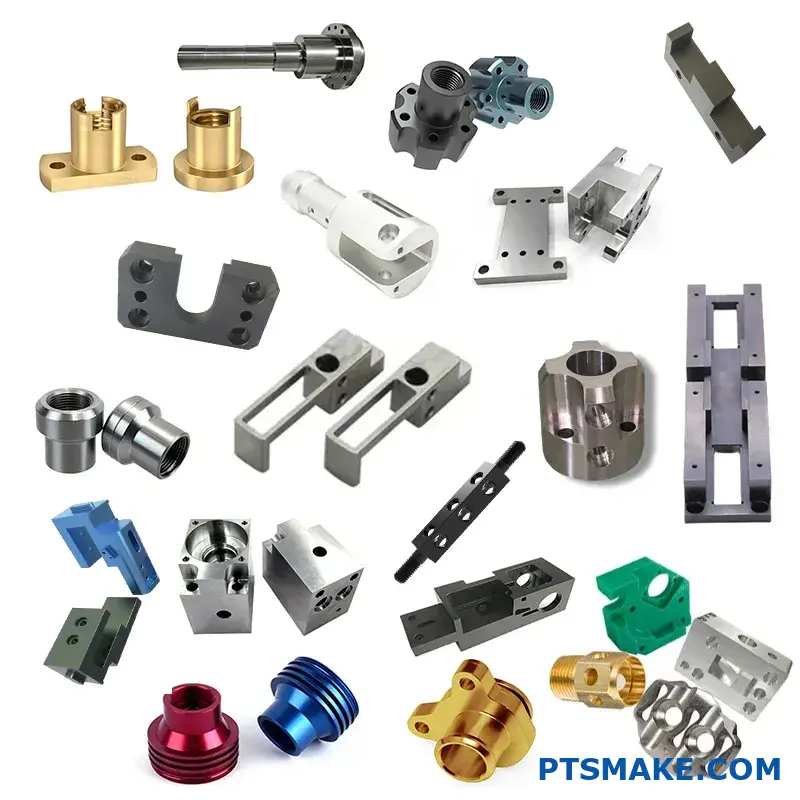
At PTSMAKE, I’ve worked with hundreds of clients who initially found CNC machining intimidating. But once you understand the basics, it becomes a powerful tool in your manufacturing arsenal. This guide will explain everything you need to know about custom CNC machining, from the fundamental processes to material selection and design considerations that can save you time and money.
Which Materials Can Be Machined?
Have you ever wondered which materials your design could actually be machined from? Or found yourself stuck at the drawing board, unsure if your brilliant concept can even be manufactured with traditional machining methods? It’s a common roadblock that can derail even the most promising projects.
CNC machining can process a wide range of materials including metals (aluminum, steel, titanium), plastics (ABS, nylon, acrylic), and even composites. Material selection depends on your part’s application requirements, including mechanical properties, environmental conditions, and budget constraints.
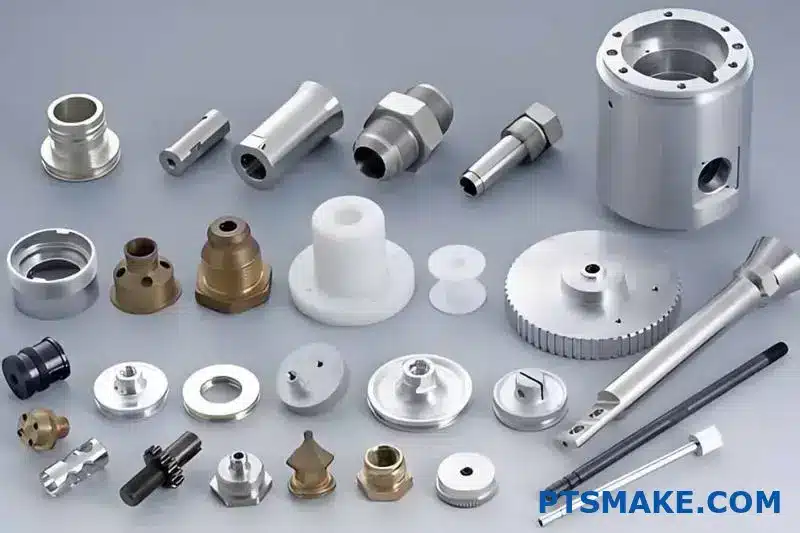
Understanding Machinability Factors
When determining if a material can be machined, we need to evaluate several critical factors. After working with thousands of custom parts at PTSMAKE, I’ve found that machinability isn’t simply a yes-or-no question – it exists on a spectrum influenced by multiple characteristics.
Hardness and Strength
Material hardness directly impacts machinability. Harder materials like tungsten carbide or hardened steel require:
- Slower cutting speeds
- More robust cutting tools
- Greater machine power
- More specialized equipment
This doesn’t mean these materials can’t be machined – just that they require appropriate adjustments to the machining process. For example, when machining hardened steel above 50 HRC (Hardness Rockwell C), we typically use ceramic or cubic boron nitride (CBN) tools rather than standard carbide tools.
Thermal Properties
How a material responds to heat during machining is crucial. Materials with:
- High thermal conductivity (like aluminum) dissipate heat quickly, allowing faster machining
- Low thermal conductivity (like titanium) concentrate heat at the cutting zone, requiring slower speeds and more cooling
Thermal expansion must also be considered. Materials that expand significantly when heated can develop dimensional instability during machining, creating tolerance challenges.
Common Machinable Materials
Metals
Metals represent the largest category of machinable materials. Here’s how common metals compare:
| Metal | Machinability | Typical Applications | Special Considerations |
|---|---|---|---|
| Aluminum | Excellent | Aerospace, automotive, electronics housings | High cutting speeds possible, excellent surface finish |
| Mild Steel | Good | Structural components, fixtures | Moderate cutting speeds, requires cooling |
| Stainless Steel | Fair to Difficult | Medical, food processing, marine applications | Work hardening tendency, slower cutting speeds |
| Titanium | Difficult | Aerospace, medical implants | Low thermal conductivity, special tooling needed |
| Brass | Excellent | Electrical components, decorative hardware | High cutting speeds, minimal tool wear |
At PTSMAKE, we’ve developed specific parameters for each metal type to optimize both efficiency and surface quality. For instance, our aluminum machining processes can achieve surface finishes as fine as 0.8μm Ra without additional finishing steps.
Plastics
Engineered plastics offer excellent machinability with some unique considerations:
| Plastic | Machinability | Typical Applications | Special Considerations |
|---|---|---|---|
| ABS | Excellent | Prototypes, consumer products | Low melting point requires cooling |
| Delrin (POM) | Excellent | Gears, bearings, precision parts | Excellent dimensional stability |
| Nylon | Good | Wear components, electrical insulators | Absorbs moisture, may need drying |
| PEEK | Good | High-temperature applications | Expensive, requires sharp tooling |
| Acrylic | Good | Displays, optical components | Brittle, can crack if improperly fixtured |
When machining plastics, thermal management becomes critical. Many plastic materials have glass transition temperatures1 that are easily reached during machining, potentially causing warping or melting. Our approach includes specialized tooling with polished cutting edges and carefully controlled cutting parameters.
Composites and Specialty Materials
Modern manufacturing increasingly utilizes composite and specialty materials:
- Carbon fiber composites: Challenging to machine due to abrasiveness and tendency for delamination
- Ceramic materials: Extremely hard but brittle, often requiring diamond tooling
- Wood and wood composites: Variable machinability depending on grain structure and density
- Graphite: Highly machinable but creates conductive dust requiring special containment
Material Selection Considerations for CNC Machining
When selecting materials for your CNC machined parts, consider these factors:
- Functional requirements: What mechanical properties does your part need?
- Environmental conditions: Will the part be exposed to chemicals, UV, high temperatures?
- Surface finish requirements: Some materials naturally achieve better finishes than others
- Cost constraints: Material costs can vary dramatically (titanium can cost 10x more than aluminum)
- Production volume: Some materials machine faster, reducing costs for higher volumes
My team at PTSMAKE regularly advises clients on material selection to optimize both performance and cost. For example, we recently helped a medical device manufacturer switch from machined stainless steel to a specially treated aluminum alloy, reducing part weight by 60% while maintaining the necessary corrosion resistance.
Materials That Challenge Traditional Machining
While many materials can be machined, some present significant challenges:
- Super-alloys (like Inconel): Extreme heat resistance makes them difficult to cut
- Ultra-hard materials (like tungsten carbide): Require specialized diamond tooling
- Extremely soft materials (like rubber): Can deform during machining
- Highly reactive metals (like magnesium): Require special safety measures due to fire risks
These challenging materials often benefit from alternative manufacturing methods like EDM (Electrical Discharge Machining), additive manufacturing, or specialized variations of conventional machining.
How Does Custom CNC Machining Ensure Precision and Accuracy?
Have you ever received machined parts that simply don’t fit as expected? Or struggled with components that fail during assembly because they’re off by mere thousandths of an inch? The frustration of inconsistent quality can derail projects and damage reputations in an instant.
Custom CNC machining ensures precision and accuracy through a combination of sophisticated technology, meticulous programming, and rigorous quality control processes. Modern CNC systems can achieve tolerances as tight as ±0.0001 inches (2.5 microns), making them essential for industries where exactness is non-negotiable.

The Technology Behind Precision CNC Machining
When it comes to achieving exceptional accuracy in custom parts, the machinery itself forms the foundation. Modern CNC machines are engineering marvels designed specifically to maintain consistency across thousands of operations.
Multi-Axis Capabilities and Their Impact on Precision
The number of axes a CNC machine has directly influences its precision capabilities. While 3-axis machines were once the standard, today’s advanced 5-axis and even 7-axis machines allow for complex geometries without repositioning the workpiece.
In my experience working with aerospace clients at PTSMAKE, the shift from 3-axis to 5-axis machining reduced geometrical errors by nearly 40% on complex components. This is because each time you reposition a workpiece, you introduce potential alignment errors. With 5-axis technology, the tool can approach the material from virtually any angle while maintaining a single setup.
Mechanical Stability and Vibration Control
Even the most sophisticated programming is useless if the machine itself isn’t physically stable. High-precision CNC machines feature:
- Cast iron or polymer concrete bases to dampen vibrations
- Linear guides with microscopic precision
- Temperature-controlled environments to prevent thermal expansion
- Linear scale feedback systems2 that constantly verify positioning
At PTSMAKE, we’ve invested in machines with thermal compensation systems that automatically adjust for minor temperature fluctuations in the production environment, maintaining tolerances even during 24-hour operations.
Programming Excellence: The Human Element
While machines provide the capability, it’s ultimately human expertise that extracts maximum precision from CNC technology.
CAM Strategy Optimization
The path the cutting tool takes (toolpath) dramatically affects both accuracy and surface finish. Expert programmers develop strategies that:
- Minimize tool deflection during cutting
- Account for material-specific behaviors
- Optimize cutting parameters for each feature
- Implement appropriate stepover distances for surface quality
We often use specialized finishing passes that remove material in increments as small as 0.001 inches, ensuring dimensional accuracy while achieving surface finishes measured in microinches.
Tool Selection and Management
Tool selection is far more nuanced than simply choosing the correct diameter. Precision machining requires consideration of:
| Tool Factor | Impact on Precision | Best Practices |
|---|---|---|
| Rigidity | Prevents deflection during cutting | Use shortest possible tool length |
| Material | Affects wear rate and edge retention | Match tool material to workpiece (carbide for hardened metals, etc.) |
| Geometry | Influences surface finish and dimensional accuracy | Select specialized geometries for specific features |
| Condition | Worn tools create dimensional variations | Implement tool wear monitoring systems |
Proper tool management systems track tool life and predict wear before it affects part quality. At PTSMAKE, our automated tool measurement systems verify dimensions before each critical operation.
Quality Control Integration
Achieving precision isn’t just about machining—it’s about verification and continuous improvement.
In-Process Measurement Systems
Modern high-precision CNC operations integrate measurement directly into the machining process:
- Touch probes that verify part positioning before cutting begins
- Laser tool measurement systems that check for tool wear or breakage
- Optical systems that measure critical features without removing the part
These technologies create feedback loops that allow for real-time adjustments, preventing errors before they occur rather than detecting them after machining is complete.
Post-Machining Verification
The final determination of accuracy comes from sophisticated measurement technologies:
- Coordinate Measuring Machines (CMMs) with accuracy to ±0.0001 inches
- Optical comparators for profile verification
- Laser scanning for complex geometries
- Surface roughness testers for finish validation
When producing medical components, we often generate comprehensive measurement reports that track dozens of critical dimensions on each part, ensuring complete traceability and validation.
Material Considerations for Maximum Precision
The material being machined significantly impacts achievable precision. Understanding material-specific behaviors is essential:
- Thermal expansion rates that might affect dimensions during machining
- Hardness variations that influence cutting parameters
- Internal stresses that could cause warping after material removal
- Grain structure that might affect surface finish quality
For one of our automotive clients, we developed a specialized process for hard-to-machine nickel alloys that included controlled cooling stages between operations, maintaining tolerances that would otherwise be impossible with conventional approaches.
Material Selection and Quality: Making the Right Choice for Your Budget?
Have you ever approved a CNC machining project only to be blindsided by unexpected material costs? Or struggled to explain to stakeholders why premium materials are worth the investment despite their higher price tags? The balance between cost and quality is perhaps the most challenging decision in custom manufacturing.
Material selection is arguably the most significant cost factor in CNC machining projects, often accounting for 40-60% of total expenses. The choice between aluminum, steel, titanium, or engineering plastics doesn’t just affect your part’s performance—it fundamentally determines your project’s budget.
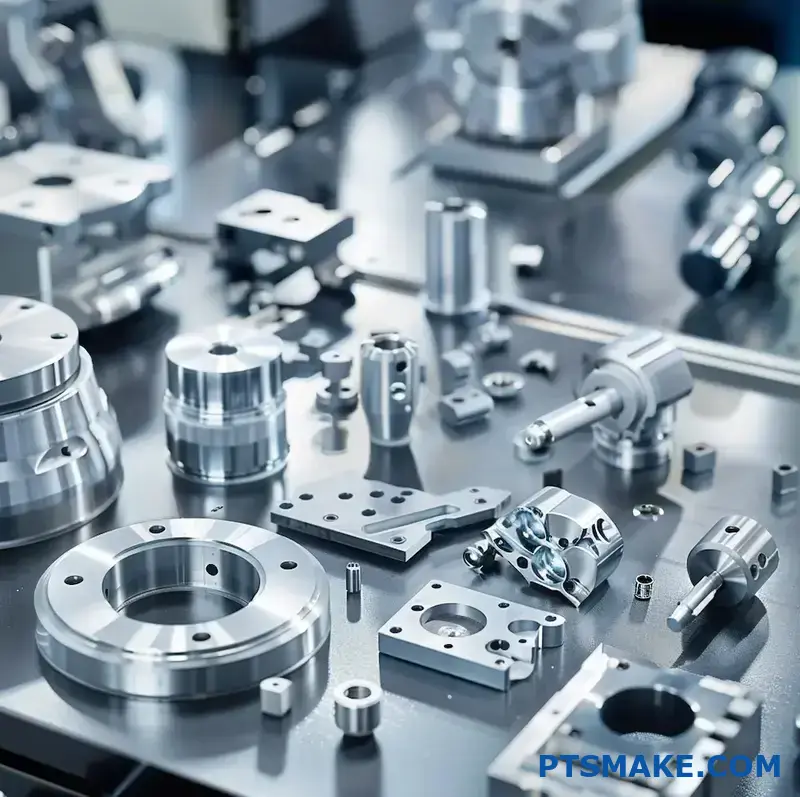
How Material Type Drives Pricing Structure
Material choice forms the foundation of your CNC machining budget. After 15+ years in precision manufacturing, I’ve found that understanding material pricing helps clients make more informed decisions.
Metal Materials Cost Hierarchy
The cost variation between metal materials can be dramatic. Aluminum is often the baseline choice for many projects due to its excellent machinability and relatively low cost. Stainless steel typically costs 1.5-3 times more than aluminum, while titanium can be 5-10 times more expensive.
Here’s a comparative overview of common metal materials and their relative cost impacts:
| Material | Relative Cost | Machinability | Common Applications |
|---|---|---|---|
| Aluminum | $ | Excellent | Prototypes, electronics enclosures, fixtures |
| Brass | $$ | Very Good | Electrical components, decorative parts |
| Carbon Steel | $$ | Good | Structural components, tooling |
| Stainless Steel | $$$ | Moderate | Medical devices, food-grade equipment |
| Titanium | $$$$$ | Poor | Aerospace components, medical implants |
At PTSMAKE, we’ve seen projects where simply switching from titanium to aluminum (where specifications allow) reduced material costs by over 80%. However, this must be balanced against performance requirements.
Engineering Plastics: Cost vs. Performance
Engineering plastics offer a wide range of cost options as well:
| Material | Relative Cost | Characteristics | Typical Applications |
|---|---|---|---|
| ABS | $ | Good impact resistance | Consumer products, prototypes |
| Acetal (Delrin) | $$ | Low friction, good stability | Gears, bushings, precision parts |
| PEEK | $$$$$ | High temperature resistance | Aerospace, medical, semiconductor |
| Ultem | $$$$ | Heat resistant, flame retardant | Electrical insulators, aerospace |
The thermoformability3 of these materials also affects machining approaches and consequently, costs. For example, PEEK’s excellent mechanical properties come with higher material costs and more challenging machinability.
Material Grade: The Hidden Cost Variable
Material grade significantly impacts both cost and performance. For instance, aircraft-grade aluminum (6061-T6) commands a premium over standard grades but offers superior strength and consistency. Medical or aerospace-grade certifications add another layer of expense.
When calculating your CNC machining budget, consider not just the base material but its specific grade. At PTSMAKE, we’ve worked with clients who initially specified aerospace-grade materials for consumer products, which unnecessarily inflated costs by 30-40%.
Material Availability and Market Fluctuations
Supply chain dynamics create another cost variable. Some considerations include:
- Market Volatility: Metal prices can fluctuate significantly based on global markets
- Minimum Order Quantities: Specialty materials often require larger purchases
- Lead Times: Rare materials may incur premium pricing for expedited sourcing
- Regional Availability: Some materials have higher costs in certain regions
In recent years, we’ve seen titanium prices fluctuate by up to 25% within a single quarter, directly impacting project costs. Establishing price-protection agreements for long-term projects using volatile materials is a strategy I often recommend.
Material Waste and Efficient Utilization
The way material is used in your CNC project significantly affects overall costs. Consider these factors:
Starting Stock Dimensions
Custom CNC machining typically starts with standard stock shapes (bars, plates, sheets). When your part dimensions don’t align well with available stock sizes, material waste increases substantially.
For example, a part requiring a 7" diameter when stock is available in 6" or 8" can mean choosing the larger stock and increasing waste by 30% or more. At PTSMAKE, we help clients adjust non-critical dimensions to better align with standard stock sizes, sometimes reducing material costs by 15-20%.
Material Removal Ratio
The material removal ratio directly impacts machining time and tool wear. Parts requiring removal of 90% of starting material will cost significantly more in machining time than those requiring only 40% removal.
The True Cost Equation: Beyond Material Price
When evaluating materials, consider these additional cost factors:
- Machining Time: Harder materials require slower cutting speeds and more frequent tool changes
- Tool Wear: Materials like titanium dramatically increase cutting tool consumption
- Surface Finish Requirements: Some materials require additional processing to achieve desired finishes
- Secondary Operations: Heat treatment or surface finishing needs vary by material
In my experience at PTSMAKE, the total cost impact of material selection extends far beyond the raw material price. A material that costs twice as much but machines three times faster might actually reduce your overall project cost.
Factors Affecting Timeline in Custom CNC Machining?
Have you ever found yourself in a situation where you need precision parts urgently but have no idea how long the manufacturing process might take? Or perhaps you’ve been caught off guard by unexpected delays that derailed your entire project timeline?
A typical custom CNC machining process usually takes between 2-8 weeks from initial order to delivery. However, the timeline can vary significantly based on part complexity, material selection, finishing requirements, order quantity, and manufacturer capabilities.
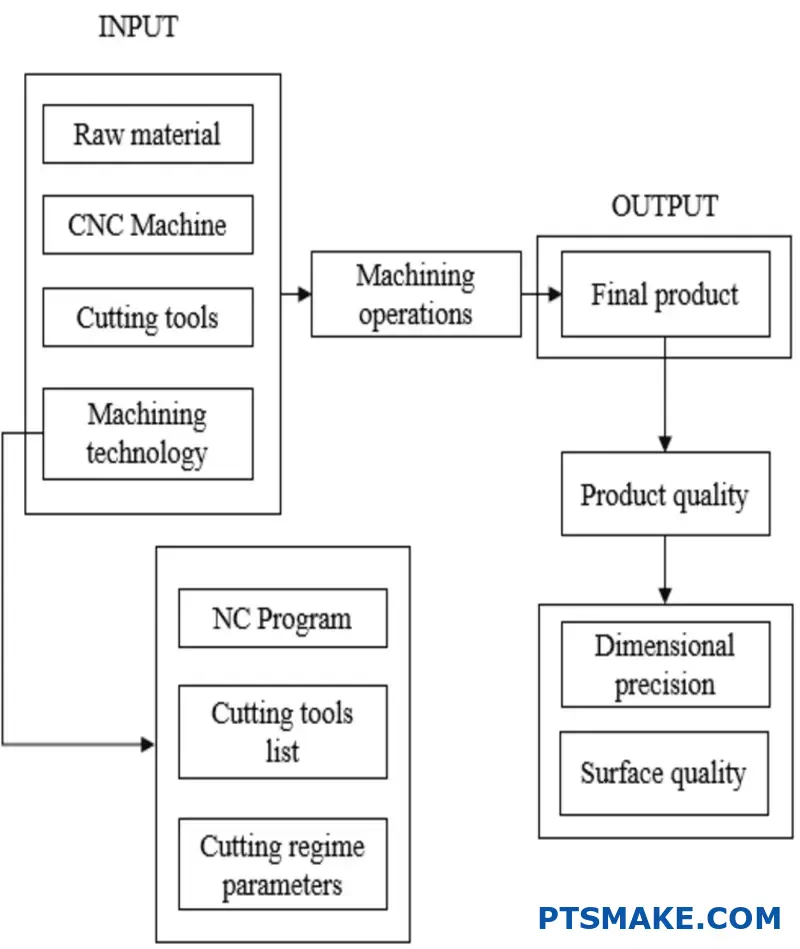
Part Complexity: A Major Timeline Determinant
When evaluating how long your custom CNC machining project will take, part complexity stands as perhaps the most influential factor. In my experience working with thousands of projects at PTSMAKE, I’ve found that complexity affects almost every stage of the manufacturing process.
Simple vs. Complex Geometries
The difference between simple and complex parts can translate to days or even weeks in production time:
| Complexity Level | Typical Features | Programming Time | Machining Time | Example Parts |
|---|---|---|---|---|
| Simple | Basic shapes, few features, single orientation | 1-2 hours | Minutes to hours | Brackets, plates, simple housings |
| Moderate | Multiple features, 2-3 orientations | 3-8 hours | Hours | Electronic enclosures, manifolds |
| Complex | Intricate details, 4+ orientations, thin walls | 1-3 days | Hours to days | Aerospace components, medical implants |
| Highly Complex | Free-form surfaces, tight tolerances (<0.001") | 3-7 days | Days | Mold tooling, turbine components |
A simple bracket might move through our CNC department in just 2-3 days, while a complex hydraulic manifold with internal passages and tight tolerances could remain in production for 2-3 weeks.
Material Selection Impact on Timeline
The material you select can significantly influence your project timeline in several ways:
Machinability Differences
Materials vary greatly in how easily they can be machined, which directly impacts production time:
- Aluminum: Generally quick to machine (100% baseline speed)
- Mild Steel: Requires slower cutting speeds (60-70% of aluminum speed)
- Stainless Steel: Even slower machining (40-50% of aluminum speed)
- Titanium: Very slow machining (15-30% of aluminum speed)
When machining titanium aerospace components, I’ve seen cutting speeds reduced to just 20% of what we’d use for aluminum, extending the machining time by 5X.
Material Availability
Some materials introduce procurement delays:
- Common materials (6061 aluminum, 1018 steel): Usually in stock
- Specialty alloys (Inconel, Hastelloy): May require 1-4 weeks to source
- Medical/aerospace grade materials: Often require certificates and longer procurement times
Finishing Requirements and Secondary Operations
Post-machining operations can add substantial time to your project:
| Finishing Process | Typical Additional Time | Notes |
|---|---|---|
| Bead Blasting | 1-2 days | Relatively quick process |
| Anodizing | 3-7 days | Type III hard anodizing takes longer |
| Plating (chrome, nickel) | 5-10 days | Includes batch processing time |
| Heat Treatment | 2-7 days | Depends on process and material thickness |
| Passivation | 3-5 days | For stainless steel parts |
When planning timelines, many clients focus on machining time but overlook these secondary operations. At PTSMAKE, we’ve found that finishing processes often account for 30-40% of the total project timeline for parts requiring significant surface treatment4.
Order Quantity Considerations
The relationship between quantity and timeline isn’t always linear:
- Prototypes (1-5 pieces): Often completed faster as they receive priority scheduling
- Small production runs (6-50 pieces): May take 2-4× longer than prototypes
- Medium runs (51-500 pieces): Usually require dedicated production planning
- Large runs (500+ pieces): May be scheduled across multiple machines or shifts
For larger orders, setup time becomes less significant when amortized across the entire batch. A setup that takes 4 hours is negligible when spread across 1,000 parts but becomes a major factor for a 5-piece order.
Manufacturer Capabilities and Capacity
Working with different manufacturers can result in dramatically different timelines:
- Small shops: May offer quicker turnaround for simple parts but slower for complex parts
- Large manufacturing partners: Often have multiple machines and shifts but may have longer queues
- Specialized manufacturers: Those focusing on certain industries or processes may offer efficiency advantages
At PTSMAKE, we maintain a diverse range of CNC equipment specifically to handle varying complexity levels with optimal efficiency. Our high-speed 5-axis machines can reduce complex part production time by up to 60% compared to traditional 3-axis machining approaches.
Remember that every custom CNC machining project is unique, with its own specific requirements and challenges. While these timeframes provide general guidance, consulting directly with your manufacturing partner at the beginning of your project will help establish realistic expectations.
The Future of Custom CNC Machining: Emerging Trends and Applications?
Have you ever wondered how custom CNC machining will transform industries in the coming years? Perhaps you’re curious about which emerging technologies will reshape manufacturing capabilities, or which industries are positioned to benefit most from upcoming innovations.
The future of custom CNC machining will be defined by automation, AI integration, hybrid manufacturing systems, and sustainable practices. These advancements will particularly benefit aerospace, medical, renewable energy, and consumer electronics industries by enabling more complex geometries, improved precision, and reduced production times.
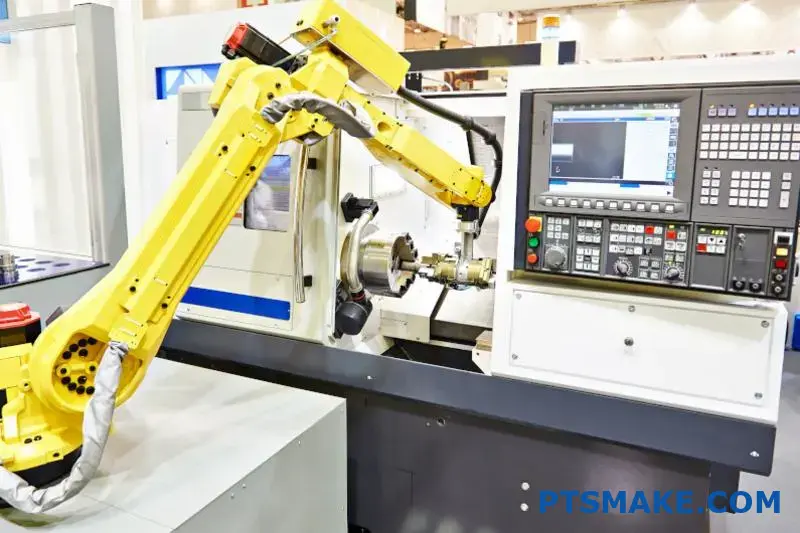
The Evolution of CNC Technologies
AI-Powered Machining Systems
CNC machining is rapidly moving toward intelligent manufacturing systems that leverage artificial intelligence and machine learning. These systems can analyze machining patterns, predict tool wear, and optimize cutting parameters in real-time. In my experience working with customers across various sectors, AI-integrated CNC systems have shown the ability to reduce machining time by 15-30% while improving surface finish quality.
The most promising development I’ve seen is predictive maintenance5 algorithms that can detect potential machine failures before they occur. This technology is particularly valuable for aerospace and medical device manufacturers where downtime can cost thousands of dollars per hour.
Lights-Out Manufacturing and Full Automation
The concept of lights-out manufacturing—fully automated production that requires no human presence—is becoming increasingly viable. At PTSMAKE, we’ve implemented semi-automated systems that can run unattended for extended periods, which has significantly increased our production capabilities for high-volume parts.
Robotic loading/unloading systems, automated tool changers, and sophisticated monitoring systems are making 24/7 production a reality, especially beneficial for:
- Automotive suppliers requiring consistent, high-volume production
- Consumer electronics manufacturers with tight production schedules
- Medical device companies needing to maintain sterile production environments
Hybrid Manufacturing Technologies
The line between additive and subtractive manufacturing is blurring with hybrid systems that combine 3D printing with CNC machining in a single setup. These systems can deposit material and then immediately machine it to final specifications, offering unique advantages for complex components.
Industry-Specific Future Applications
Aerospace Advancements
The aerospace industry stands to gain tremendously from next-generation CNC capabilities. Future aircraft designs will require increasingly complex lightweight structures that can only be economically manufactured through advanced machining techniques.
Some emerging applications include:
- Multi-axis machining of monolithic structures to replace multi-part assemblies
- Ultra-high-precision components for electric aircraft propulsion systems
- Complex internal cooling channels for next-generation jet engines
Medical Device Evolution
The medical industry is moving toward increasingly personalized solutions, and future CNC machining will enable this transformation. Patient-specific implants created from CT or MRI scans will become standard practice, requiring sophisticated 5-axis machining centers capable of translating biological data into machined components.
I’ve already seen early versions of this technology in action, with some orthopedic companies using custom CNC machined implants tailored to individual patients’ anatomy.
Renewable Energy Infrastructure
The renewable energy sector will require increasingly sophisticated components as technologies mature:
| Component | Future CNC Application | Industry Impact |
|---|---|---|
| Wind Turbine Components | Larger, more precise gear systems | Increased energy efficiency |
| Solar Tracking Systems | Complex, lightweight support structures | Improved durability and performance |
| Wave Energy Converters | Corrosion-resistant precision components | Enhanced reliability in marine environments |
Advanced Electronics Manufacturing
As consumer electronics continue to shrink while adding functionality, CNC micro-machining will become increasingly important. Future applications include:
- Micro-fluidic channels for advanced cooling systems in high-performance computing
- Ultra-precise housings for augmented reality and virtual reality devices
- Miniaturized components for wearable technology and medical monitoring devices
Sustainable Machining Practices
Ecological Machining Techniques
Future CNC machining will place greater emphasis on sustainability. At PTSMAKE, we’re already investing in technologies that reduce environmental impact:
- Minimal quantity lubrication (MQL) systems that dramatically reduce coolant usage
- Energy-efficient machines with regenerative drives and optimized power management
- Improved material utilization through advanced CAM software and nesting algorithms
Circular Economy Applications
The concept of designing products for eventual remanufacturing will gain importance. This approach requires precision CNC machining to restore worn components to like-new condition, creating opportunities in:
- Heavy equipment rebuilding
- Automotive transmission remanufacturing
- Industrial pump and valve restoration
Challenges and Opportunities for Manufacturers
Skill Requirements Evolution
As CNC technologies advance, the skills required to operate them will change dramatically. Future CNC operators will need:
- Programming knowledge for multiple machine types
- Data analysis skills to interpret machine performance metrics
- Understanding of material science and advanced cutting strategies
This transformation presents both challenges and opportunities for manufacturers. At PTSMAKE, we’ve implemented continuous training programs to ensure our team stays ahead of technological developments.
Investment Considerations
Companies looking to benefit from future CNC developments should consider strategic investments in:
- Flexible manufacturing systems capable of adapting to changing requirements
- Digital infrastructure to support data-driven manufacturing
- Advanced simulation and verification systems to reduce setup time and errors
- Sustainable technologies that will meet increasingly stringent environmental regulations
The manufacturing landscape is changing rapidly, but with strategic planning and investment in emerging technologies, companies can position themselves to thrive in the future of CNC machining.
How to Implement Quality Control in CNC Machining Projects?
Have you ever received CNC parts that didn’t meet your specifications, costing you valuable time and resources? Or found yourself dealing with inconsistent quality across production batches, leaving you frustrated and questioning your supplier choice?
Quality control in CNC machining is a systematic process that ensures manufactured parts consistently meet design specifications and industry standards. Effective QC involves inspection techniques, statistical analysis, and well-defined acceptance criteria throughout the production cycle.
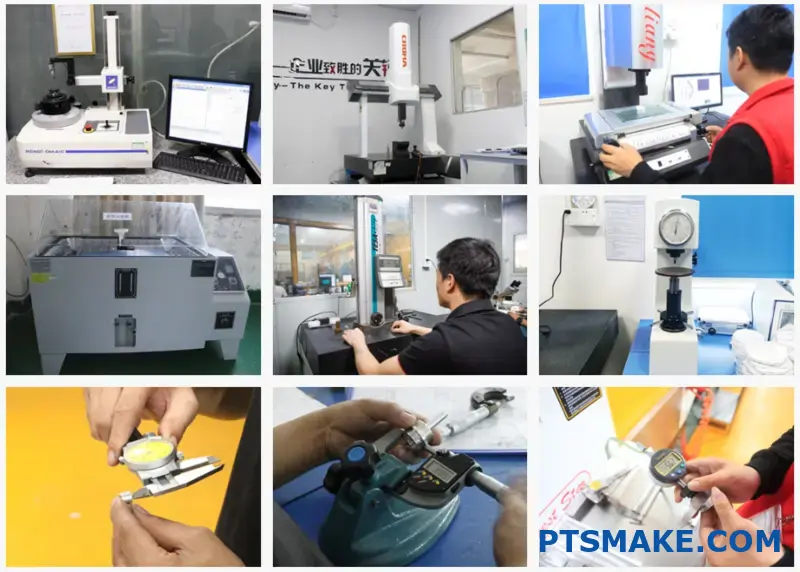
The Foundation of Quality Control Systems
Quality control isn’t just an afterthought in the CNC machining process—it’s a comprehensive system that should be integrated from project planning through final delivery. In my experience working with hundreds of clients, I’ve found that understanding these fundamentals makes all the difference in project outcomes.
Documentation and Specifications
The backbone of any quality control system begins with clear documentation. Before production starts, ensure your supplier has:
- Detailed technical drawings with GD&T (Geometric Dimensioning and Tolerancing)
- Material specifications and certifications
- Surface finish requirements
- Special feature callouts and critical dimensions
I always tell clients that ambiguity is the enemy of quality. The more precise your specifications, the easier it is for your supplier to deliver exactly what you need. At PTSMAKE, we review all documentation with clients before production to ensure complete alignment on expectations.
Inspection Planning
A robust inspection plan defines what will be measured, how it will be measured, and when in the production process measurements will occur. This should include:
- Inspection frequencies (first article, in-process, final)
- Sampling methods and sizes
- Measurement tools and equipment to be used
- Pass/fail criteria for each inspection point
The right inspection plan balances thoroughness with efficiency. I’ve seen companies waste resources by over-inspecting non-critical features while missing crucial quality checks on functional aspects.
Advanced Quality Control Methods in CNC Machining
Statistical Process Control (SPC)
Statistical Process Control6 moves beyond simple pass/fail inspection by analyzing patterns and trends in the manufacturing process. By collecting and analyzing data, SPC helps identify potential issues before they become actual defects.
Key components of SPC include:
- Control charts to monitor process stability
- Capability studies to verify process potential
- Run charts to identify trends over time
- Root cause analysis when deviations occur
When implemented properly, SPC reduces variability and improves consistency across production runs. This is especially important for high-volume orders or critical components.
Automated Inspection Technologies
Modern quality control often incorporates advanced measurement technologies:
| Technology | Best Use Cases | Advantages | Limitations |
|---|---|---|---|
| Coordinate Measuring Machines (CMM) | Complex geometries, tight tolerances | High precision, comprehensive data collection | Time-consuming, requires programming |
| Optical Scanners | Surface inspection, form verification | Fast, non-contact measurement | May miss internal features |
| Vision Systems | Small features, high-volume inspection | Automated, consistent results | Limited to visible features |
| Laser Trackers | Large parts, assembly verification | Excellent for large-scale accuracy | Expensive, requires line-of-sight |
At PTSMAKE, we’ve invested in a combination of these technologies to provide comprehensive quality assurance for every project, regardless of complexity or volume.
Implementing Quality Checks Throughout Production
First Article Inspection (FAI)
The first article inspection represents a critical milestone in any CNC machining project. This comprehensive evaluation of the first produced part verifies that:
- All dimensions meet specifications
- Material properties match requirements
- Surface finishes are as specified
- The manufacturing process is capable and stable
A thorough FAI serves as both verification and baseline for future production. In my experience, investing time in a detailed first article inspection prevents costly errors in full production runs.
In-Process Quality Control
Quality shouldn’t be inspected at the end—it must be built in throughout the manufacturing process. Effective in-process controls include:
- Regular operator checks during machining
- Statistical sampling at defined intervals
- Process parameter monitoring (speeds, feeds, temperatures)
- Tool wear measurements and replacement schedules
These ongoing checks catch deviations before they affect large numbers of parts. The best CNC suppliers maintain detailed in-process control records that provide traceability for each production batch.
Final Inspection Protocols
The final quality gate before parts ship should include:
- Dimensional verification of critical features
- Visual inspection for defects, damage, or finish issues
- Functional testing when applicable
- Complete documentation of results
A supplier with robust quality systems will provide detailed inspection reports with each shipment, giving you confidence in what you’re receiving.
Evaluating a Supplier’s Quality Control Capabilities
When selecting a custom CNC machining partner, thoroughly assess their quality systems by asking:
- What quality certifications do they maintain (ISO 9001, AS9100, etc.)?
- What measurement equipment do they use, and how often is it calibrated?
- Can they provide sample inspection reports from similar projects?
- What training do their quality technicians receive?
- How do they handle non-conformance and corrective actions?
At PTSMAKE, we maintain ISO 9001 certification and have developed quality systems that exceed industry standards. Our approach to quality isn’t just about preventing defects—it’s about continuous improvement in every aspect of production.
What Are the Surface Finishing Options for CNC Machined Parts?
Have you ever received a CNC machined part that looked perfect dimensionally but had a surface finish that completely missed the mark? Or spent hours trying to explain to a supplier exactly what surface texture you needed, only to be disappointed with the results?
Surface finishing for CNC machined parts involves processes that enhance appearance, durability, and functionality after machining. Options include mechanical treatments like polishing and sandblasting, chemical processes such as anodizing and plating, and coating methods like painting and powder coating, each offering unique aesthetic and performance benefits.
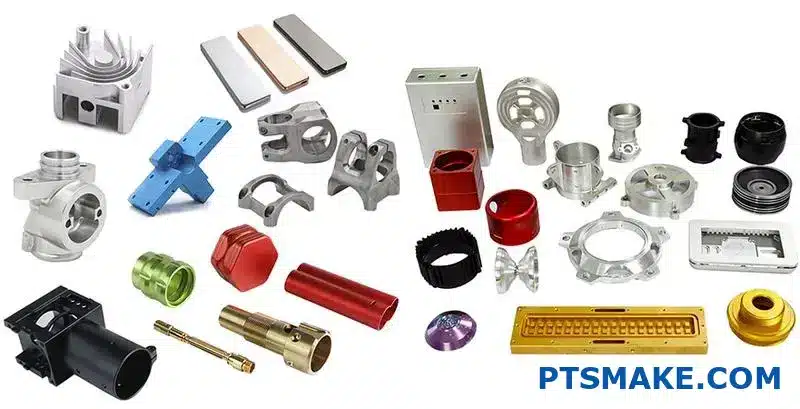
Understanding Surface Finishing Importance
Surface finishing is often considered the final step in CNC machining, but I believe it should be part of your design considerations from the beginning. A well-chosen surface finish not only enhances the visual appeal of your part but can significantly improve its functional performance.
In my experience working with clients across various industries, surface finish selection impacts everything from part longevity to assembly fit and customer perception. For example, a medical device may require a specific surface roughness to ensure proper sterilization, while an automotive component might need corrosion resistance to withstand harsh environments.
Mechanical Surface Finishing Methods
Bead Blasting
Bead blasting uses compressed air to propel tiny glass beads against the part surface. This creates a uniform, matte finish that effectively hides tool marks and small imperfections. I often recommend bead blasting for parts that need a consistent appearance without the reflectivity of polished surfaces.
Polishing
Polishing creates smooth, reflective surfaces by gradually removing material with increasingly fine abrasives. The process can range from basic polishing to mirror finishing, where surfaces achieve a reflection clarity similar to an actual mirror.
At PTSMAKE, we categorize polishing into several levels:
| Polishing Grade | Ra Value (μm) | Typical Applications |
|---|---|---|
| Standard Polish | 0.8-1.6 | General components, non-visible parts |
| Fine Polish | 0.2-0.8 | Consumer products, visible parts |
| Mirror Polish | <0.2 | Optical components, luxury products, molds |
Brushing
Brushing creates a directional pattern of fine lines using abrasive wheels or belts. This finish offers a distinctive aesthetic often seen in consumer electronics and kitchen appliances. Beyond appearances, the directional texture can actually help guide the flow of liquids or air in certain applications.
Vibratory Finishing
This mass finishing technique involves placing parts in a vibrating container with abrasive media and compounds. As the container vibrates, the media flows around the parts, smoothing edges and surfaces. I find this method particularly efficient for processing multiple small parts simultaneously.
Chemical Surface Finishing Options
Anodizing
Anodizing is an electrochemical process7 specifically for aluminum parts that creates a controlled oxide layer on the surface. This layer enhances corrosion resistance, wear resistance, and allows for coloring in a wide range of options.
There are three main types:
- Type I (Chromic): Provides thin coating with excellent corrosion resistance
- Type II (Standard): Offers good protection and is commonly used for decorative applications
- Type III (Hard): Creates a very thick, hard surface that significantly improves wear resistance
Chemical Film (Passivation)
Passivation removes free iron from the surface of stainless steel parts, enhancing their natural corrosion resistance. This chemical process is essentially invisible but critically important for parts that will be exposed to moisture or corrosive environments.
Electroplating
Electroplating deposits a thin layer of metal onto the part surface using electrical current. Common plating materials include:
- Nickel: For hardness and corrosion resistance
- Chrome: For hardness, wear resistance, and decorative appeal
- Zinc: For excellent corrosion protection (often used on steel parts)
- Gold: For electrical conductivity and oxidation resistance
Coating-Based Finishes
Powder Coating
Powder coating applies a dry powder to the part surface, which is then cured under heat to form a durable finish. I often recommend powder coating when clients need exceptional durability, chemical resistance, and color options. The thick coating also helps hide minor surface imperfections.
Painting and Clear Coating
Paint finishes offer unlimited color possibilities and various texture options. For CNC machined parts, we typically use spray application for even coverage. Clear coats can provide UV protection and additional wear resistance while preserving the natural appearance of the material.
Selecting the Right Surface Finish
When helping clients choose the appropriate surface finish, I consider several factors:
Material compatibility: Not all finishes work with all materials. For instance, anodizing works only on aluminum, while certain platings bond better to specific metals.
Functional requirements: Will the part be exposed to harsh environments? Does it need electrical conductivity or insulation? Is wear resistance critical?
Aesthetic considerations: Is the part visible in the final product? Does it need to match other components?
Cost and lead time: More complex finishes naturally add cost and processing time to your project.
Environmental factors: Some finishing processes have environmental implications, which might influence your choice if sustainability is a priority.
I’ve found that providing reference samples to manufacturers like us at PTSMAKE can significantly improve communication about desired finishes. Photos can be helpful, but nothing beats a physical sample for conveying exact texture and appearance expectations.
Can Custom CNC Machining Handle Complex Geometries and Tight Tolerances?
Have you ever found yourself staring at an intricate part design, wondering if it’s even manufacturable? Or perhaps you’ve received parts that looked nothing like your specifications, with features that were supposed to be precise but ended up embarrassingly off-target?
Yes, custom CNC machining can absolutely handle complex geometries and tight tolerances. With advanced 5-axis machines, specialized tooling, and precise programming, modern CNC systems can create parts with tolerances as tight as ±0.0005 inches and geometries that were impossible just years ago.
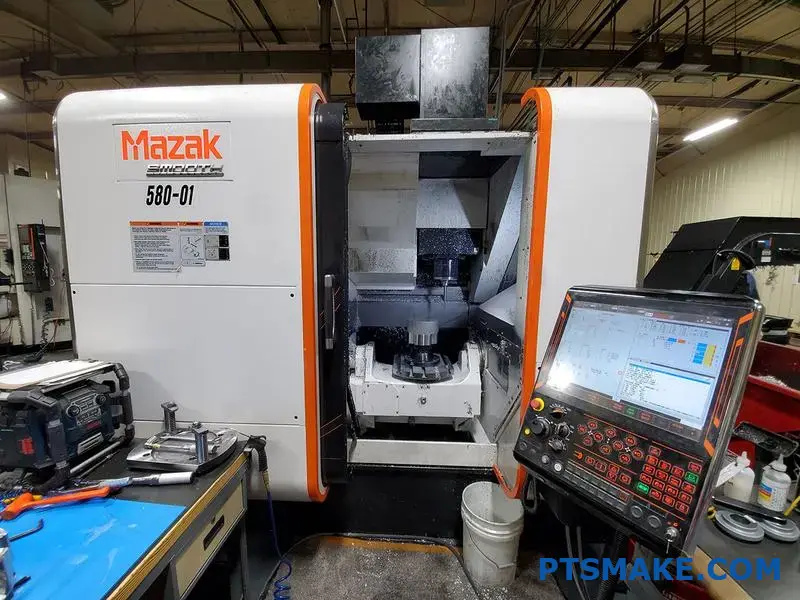
The Evolution of CNC Capabilities
When I first entered the manufacturing industry, complex parts with tight tolerances were often considered "no-go" territory for standard CNC operations. Fast forward to today, and the landscape has dramatically changed. Modern CNC machining centers have evolved to handle increasingly sophisticated geometries while maintaining precision that was once thought impossible.
The advancement in CNC technology hasn’t happened overnight. It’s been a gradual progression driven by industry demands and technological breakthroughs. Today’s multi-axis CNC machines can approach workpieces from virtually any angle, creating complex contours, undercuts, and features that were once exclusive to other manufacturing methods.
Multi-Axis Machining: The Game Changer
Traditional 3-axis machining restricts movement to the X, Y, and Z directions. While effective for simpler parts, this limitation becomes apparent when dealing with complex geometries. The introduction of 4-axis and 5-axis machining has revolutionized what’s possible:
- 4-axis machining adds rotation around one axis, typically allowing the workpiece to rotate
- 5-axis machining incorporates two rotational axes, enabling the cutting tool to approach the workpiece from virtually any direction
At PTSMAKE, our 5-axis machines routinely handle parts with compound curves, undercuts, and features that would be impossible with conventional 3-axis machining. This capability has opened doors for designers who previously had to compromise their vision due to manufacturing constraints.
Tolerance Capabilities in Modern CNC Machining
When clients ask about tolerances, I find it helpful to provide a practical understanding of what’s achievable:
| Tolerance Classification | Typical Range | Typical Applications |
|---|---|---|
| Standard Tolerance | ±0.005" (0.127mm) | General components, non-critical features |
| Precision Tolerance | ±0.001" (0.0254mm) | Mechanical components, mating parts |
| High Precision | ±0.0005" (0.0127mm) | Aerospace components, medical devices |
| Ultra-Precision | ±0.0001" (0.00254mm) | Optical components, specialized instruments |
These capabilities aren’t just theoretical. In recent projects, we’ve consistently achieved high precision tolerances on complex aerospace components with intricate internal features and medical device parts requiring perfect surface finish while maintaining dimensional accuracy.
Factors Affecting Precision and Complexity
While modern CNC machines are capable of remarkable precision, several factors influence whether tight tolerances can be consistently achieved on complex geometries:
Material Considerations
Different materials respond differently to machining processes. For instance, aluminum is relatively stable and easy to machine to tight tolerances. In contrast, certain plastics might experience thermal expansion during machining, making tight tolerances more challenging to maintain.
The material’s anisotropic properties8 also play a significant role in achieving consistent tolerances across different directions. Some materials exhibit different characteristics depending on the direction of the cut, requiring specialized cutting strategies.
Tooling and Fixturing Solutions
Sophisticated geometries often require specialized tooling. Extended-reach tools, for example, can access deep pockets but may introduce vibration that affects precision. The key is balancing reach requirements with rigidity needs.
Fixturing – how the part is held during machining – becomes increasingly important as complexity increases. Custom fixtures that securely hold the workpiece while allowing access to all required surfaces are often essential for complex parts. At PTSMAKE, we design custom fixturing solutions for each complex project, ensuring stability throughout the machining process.
Programming and Machining Strategy
The programming approach significantly impacts both feasibility and precision. Modern CAM (Computer-Aided Manufacturing) software offers sophisticated toolpath strategies that maintain constant tool engagement, reducing tool deflection and improving surface finish.
For particularly complex geometries, we often employ progressive machining strategies:
- Roughing passes to remove bulk material
- Semi-finishing to establish the general form
- Finishing passes with smaller tools and lighter cuts for precision
- Verification using on-machine probing between operations
Real-World Applications and Limitations
Despite these impressive capabilities, it’s important to understand where CNC machining excels and where other processes might be more appropriate:
Ideal Applications for Complex CNC Machining
- Aerospace components with complex internal passages and tight tolerance requirements
- Medical devices requiring both intricate features and biocompatibility
- Optical mounts that must balance complex forms with extreme precision
- Robotics components with organic shapes and precise fit requirements
When to Consider Alternative Processes
Even with advanced CNC capabilities, certain geometries might be better suited to other processes:
- Extremely small internal features might be better achieved through EDM (Electrical Discharge Machining)
- Parts requiring consistent internal lattice structures might benefit from additive manufacturing
- High-volume production of complex plastic parts might be more economical with injection molding
The key is understanding the strengths and limitations of each manufacturing method. Often, I recommend hybrid approaches that leverage the precision of CNC machining for critical features while utilizing other processes for aspects better suited to them.
Quality Assurance for Complex Parts
Creating complex parts with tight tolerances is only half the battle – verification is equally important. Modern metrology has evolved alongside machining capabilities:
- CMM (Coordinate Measuring Machines) provide precise verification of dimensional accuracy
- Optical scanning creates detailed 3D models for comparison against original designs
- In-process probing allows verification during machining rather than only afterward
These technologies enable us to document that parts meet specifications and provide valuable feedback for process improvement.
What Quality Control Measures Are Used in Custom CNC Machining?
Have you ever received a batch of CNC machined parts only to find they didn’t match your specifications? Or worried about the consistency of parts across multiple production runs? Quality control issues can quickly derail projects, waste resources, and damage your reputation with clients.
Quality control in custom CNC machining involves systematic inspection processes, advanced measurement technologies, and adherence to international standards. These measures ensure that machined parts meet dimensional tolerances, surface finish requirements, and functional specifications throughout the manufacturing process.
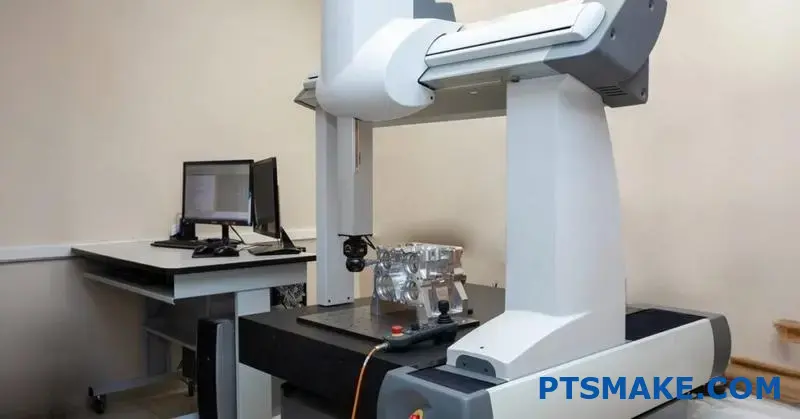
The Importance of Quality Control Systems in CNC Machining
Quality control isn’t just an afterthought in custom CNC machining – it’s an integral part of the entire manufacturing process. At PTSMAKE, we’ve developed comprehensive quality control systems that monitor every step from raw material inspection to final product verification.
Effective quality control in CNC machining requires a multi-layered approach. The best manufacturers implement what I call the "three pillars" of machining quality control:
- Pre-production quality assurance
- In-process monitoring and control
- Post-production inspection and testing
Each layer serves as a checkpoint to catch potential issues before they become costly problems. In my experience, manufacturers who excel in all three areas consistently deliver superior parts.
Pre-Production Quality Control Measures
Material Inspection and Verification
Before any cutting begins, we thoroughly inspect incoming materials. This includes checking material certificates, verifying chemical compositions, and testing physical properties when necessary. For critical applications, we use spectroscopic analysis9 to confirm material composition at a molecular level.
Material traceability is also crucial. We maintain records linking raw materials to their sources and corresponding inspection data, ensuring complete transparency throughout the manufacturing process.
Programming Verification
CNC programming errors can lead to significant quality issues. To prevent this, we implement several verification steps:
- CAD/CAM simulation to detect potential collisions and toolpath issues
- Dry runs without material to verify machine movements
- First article inspection before full production begins
These steps help identify and correct programming errors before they affect the actual production run.
In-Process Quality Control Techniques
Real-Time Monitoring Systems
Modern CNC machines come equipped with sensors that monitor various parameters during machining:
| Parameter Monitored | Purpose | Benefit |
|---|---|---|
| Cutting forces | Detect tool wear and potential breakage | Prevents defects and reduces downtime |
| Vibration | Identify unstable cutting conditions | Improves surface finish and dimensional accuracy |
| Temperature | Monitor thermal effects on workpiece | Maintains tight tolerances |
| Power consumption | Track overall machine health | Ensures consistent performance |
Real-time monitoring allows operators to make immediate adjustments when parameters drift outside acceptable ranges.
Statistical Process Control (SPC)
SPC involves collecting data during production to identify trends and variations. By tracking key measurements over time, we can detect when a process is becoming unstable before it produces out-of-specification parts.
At PTSMAKE, we use SPC charts to track critical dimensions across production runs. This data-driven approach helps maintain consistency and allows us to continuously improve our processes.
Post-Production Quality Inspection Methods
Dimensional Inspection Technologies
After machining, parts undergo thorough dimensional inspection using various technologies:
- Coordinate Measuring Machines (CMMs) for high-precision 3D measurements
- Optical comparators for profile verification
- Laser scanners for complex geometries
- Vision systems for surface defect detection
For high-volume production, we often use automated inspection systems that can quickly verify multiple dimensions while maintaining accuracy.
Surface Finish Verification
Surface finish requirements vary widely depending on the application. We use several methods to verify surface quality:
- Profilometers to measure surface roughness (Ra, Rz values)
- Visual comparison to surface finish standards
- Touch comparison for tactile verification
The appropriate method depends on the specific requirements and the critical nature of the surface.
Functional Testing
Sometimes dimensional accuracy isn’t enough – parts must also function correctly. Functional testing might include:
- Assembly testing with mating components
- Load testing for structural parts
- Leak testing for sealed components
- Electrical conductivity testing for conductive components
At PTSMAKE, we develop custom testing protocols based on each part’s end-use requirements.
Quality Standards and Certifications
Quality control in CNC machining is often governed by industry standards and certifications. The most common include:
- ISO 9001:2015 for general quality management systems
- AS9100 for aerospace applications
- ISO 13485 for medical device components
- IATF 16949 for automotive parts
These standards provide frameworks for implementing comprehensive quality control systems. They require documented procedures, regular audits, and continuous improvement processes.
Documentation and Traceability
Complete documentation is essential for effective quality control. For each production run, we maintain records of:
- Material certifications
- Process parameters
- Inspection results
- Any deviations and corrective actions
- Operator qualifications
This documentation creates a complete history of each part, allowing us to trace any issues back to their source and implement improvements for future production runs.
How Does Custom CNC Machining Support Prototyping and Production?
Have you ever found yourself stuck between a brilliant design concept and its physical realization? Or perhaps watched a promising prototype fail to transition smoothly into production, leading to costly delays and redesigns? This frustrating gap between vision and execution plagues even the most talented engineering teams.
Custom CNC machining serves as the critical bridge connecting prototyping to production by offering precision, material versatility, and scalable manufacturing capabilities. It enables engineers to rapidly iterate designs with production-identical materials, validate form and function, and seamlessly transition to full-scale manufacturing without significant retooling or process changes.
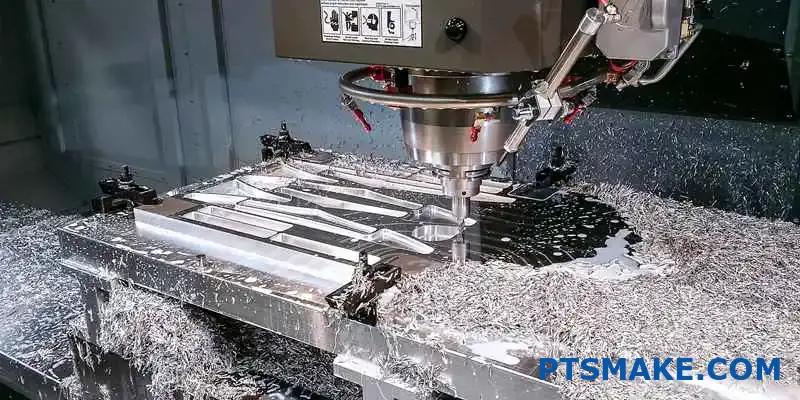
The Seamless Continuum: From Prototype to Production
In today’s competitive manufacturing landscape, the ability to move efficiently from concept to final product determines market success. Custom CNC machining creates a seamless continuum between these crucial phases. Unlike other manufacturing methods that might require completely different setups for prototyping versus production, CNC machining maintains consistency throughout the development cycle.
When designing a new component, engineers need to validate not just the form but also the functional properties. With custom CNC machining, I can produce prototypes using the exact same materials planned for production. This material continuity is invaluable – it means the thermal, mechanical, and chemical properties observed in testing will accurately reflect the final product’s performance.
Material Versatility in Prototyping
One of the greatest advantages of custom CNC machining for product development is the remarkable material versatility it offers. From aluminum and stainless steel to engineering-grade plastics like PEEK or Delrin, the same CNC process can accommodate virtually any machinable material10 needed for testing different attributes:
| Material Type | Prototyping Benefits | Production Translation |
|---|---|---|
| Aluminum | Rapid machining, good strength-to-weight ratio | Direct production material or validation for cast parts |
| Stainless Steel | Corrosion resistance testing, high-stress applications | Production-identical material properties |
| Engineering Plastics | Chemical resistance, electrical properties, weight reduction | Direct production material validation |
| Exotic Alloys | Specialized property testing (heat resistance, etc.) | Proof of concept for specialized applications |
This versatility allows engineering teams to experiment with material options without changing manufacturing methods, dramatically reducing the variables when transitioning to production.
Iterative Design Refinement
The prototype-to-production journey rarely follows a straight line. Custom CNC machining excels in supporting iterative design improvement through rapid turnaround capabilities. When I work with clients at PTSMAKE, we often produce multiple design iterations in quick succession, each refining the previous version.
This iterative approach is made possible by the digital nature of CNC machining. Once the CAD model is updated, the corresponding CNC program can be quickly adjusted. Unlike methods requiring new tooling for each design change, CNC machining allows for economical evolution of designs without significant time penalties.
Production-Identical Prototyping Advantages
The gold standard in prototyping is creating components that perfectly mirror production parts in both form and function. Custom CNC machining enables what I call "production-identical prototyping" – the ability to create test parts that are virtually indistinguishable from those that will eventually be mass-produced.
Dimensional Accuracy and Tolerance Validation
One critical aspect of transitioning from prototype to production is validating that tight tolerances can be consistently maintained. CNC machining excels here, with typical tolerances of ±0.001" (0.025mm) or better for precision components. This allows engineers to:
- Confirm fit and function with mating components
- Validate clearances for moving assemblies
- Test interference fits and assembly processes
- Verify optical or aesthetic requirements
When tolerances are validated using the same process intended for production, there’s minimal risk of unexpected issues when scaling up.
Surface Finish Consistency
Beyond dimensional accuracy, surface finish requirements can make or break a product’s functionality and appearance. Custom CNC machining provides consistent surface finishes that can be precisely specified and replicated in production:
- As-machined finishes for functional surfaces
- Bead-blasted or tumbled finishes for improved appearance
- Polished surfaces for optical components or molds
- Specialized surface treatments for specific friction or sealing requirements
These finishes can be standardized and documented during prototyping, ensuring production parts will perform identically.
Scalability: The Production Advantage
Perhaps the most significant advantage of custom CNC machining in the prototype-to-production journey is its inherent scalability. The same CNC programs developed during prototyping can be transferred directly to production machines with minimal modification.
From Single Parts to Production Quantities
When transitioning from prototype to production, volume requirements typically increase dramatically. CNC machining scales effectively through several approaches:
- Multi-axis machining to reduce setups and increase throughput
- Fixture design optimization for rapid part loading/unloading
- Tool path optimization for reduced cycle times
- Multiple machine setups running identical programs
- Lights-out manufacturing for 24/7 production capability
At PTSMAKE, I’ve implemented these strategies to scale production from single prototypes to thousands of parts per month while maintaining consistent quality and specifications.
Cost Optimization in the Transition
The financial aspect of moving from prototype to production cannot be overlooked. Custom CNC machining offers unique cost advantages during this transition:
- No new tooling investments required (unlike injection molding or die casting)
- Process optimizations rather than process changes
- Inventory flexibility without minimum order quantities
- Ability to make design refinements without scrapping expensive tooling
- Option for just-in-time manufacturing to reduce inventory carrying costs
This flexibility makes CNC machining particularly valuable for products with uncertain demand forecasts or those requiring frequent iterations even during production.
Real-World Applications and Success Stories
The principles outlined above aren’t just theoretical. I’ve witnessed numerous successful prototype-to-production transitions using custom CNC machining across diverse industries:
- Aerospace components moving from flight test prototypes to approved production parts
- Medical device housings transitioning from clinical trials to full commercial production
- Consumer electronics components scaling from initial concept to mass production
- Automotive aftermarket parts growing from specialty items to mainstream offerings
In each case, the consistency and reliability of CNC machining processes provided the foundation for successful scaling.
Custom CNC machining delivers exceptional value throughout the product development lifecycle, creating a smooth path from initial concept through prototyping and into full production. Its material versatility, precision capabilities, and inherent scalability make it the ideal manufacturing approach for companies seeking to minimize risk and maximize efficiency in bringing new products to market.
Learn about material property thresholds that affect manufacturing feasibility and quality. ↩
Click to learn about advanced positioning technology in precision machining. ↩
Learn which materials provide optimal cost-performance balance for your specific application. ↩
Learn about advanced surface treatments and how they affect part performance. ↩
Click to learn advanced maintenance techniques that prevent costly machine downtime. ↩
Learn proven techniques to eliminate manufacturing defects and improve part quality. ↩
Learn about this advanced aluminum treatment technique and its benefits. ↩
Learn how material properties affect machining precision and part performance. ↩
Learn how advanced material analysis ensures your parts meet exact specifications. ↩
Click to understand the specific properties that determine if a material can be effectively machined. ↩


